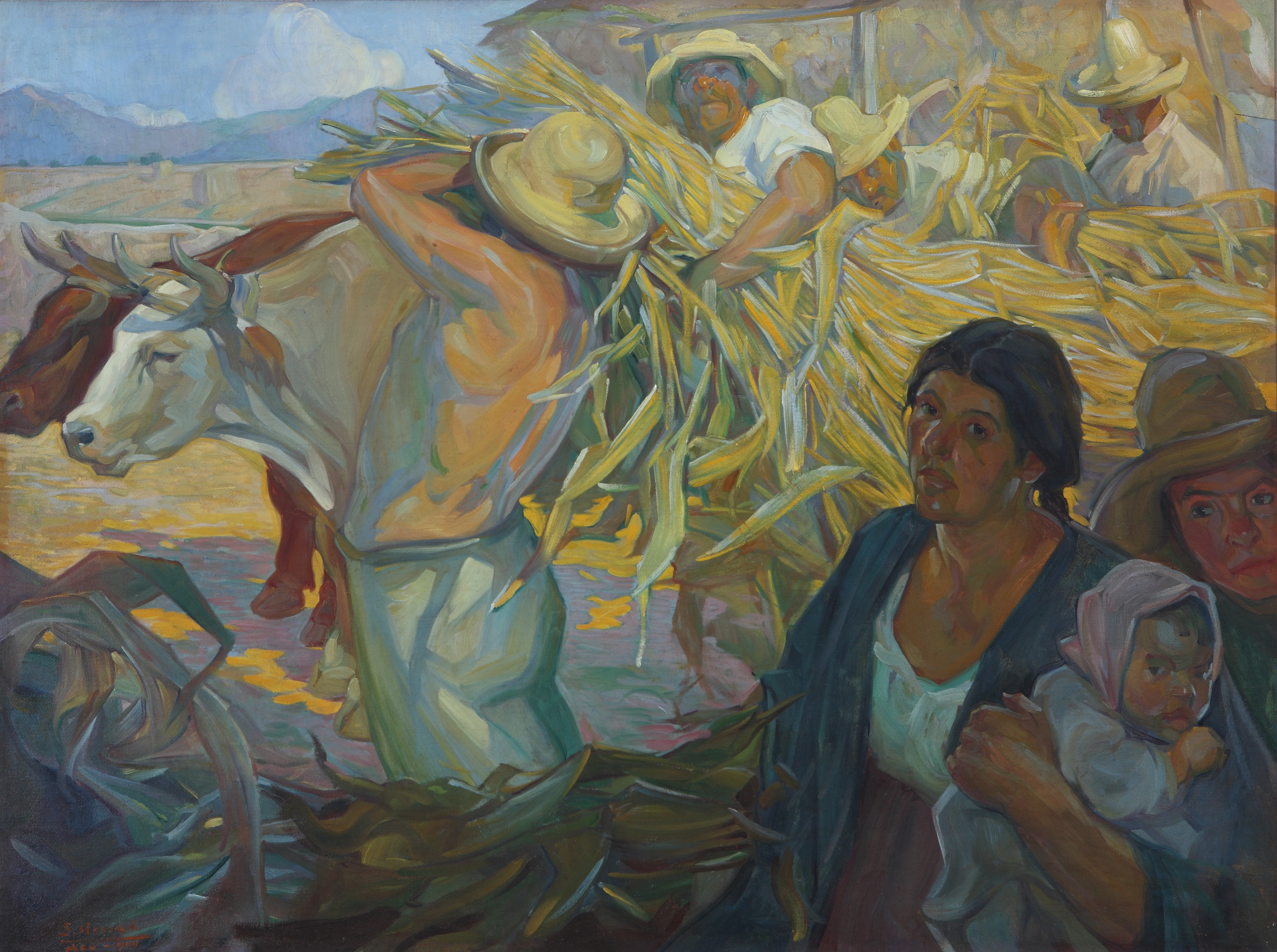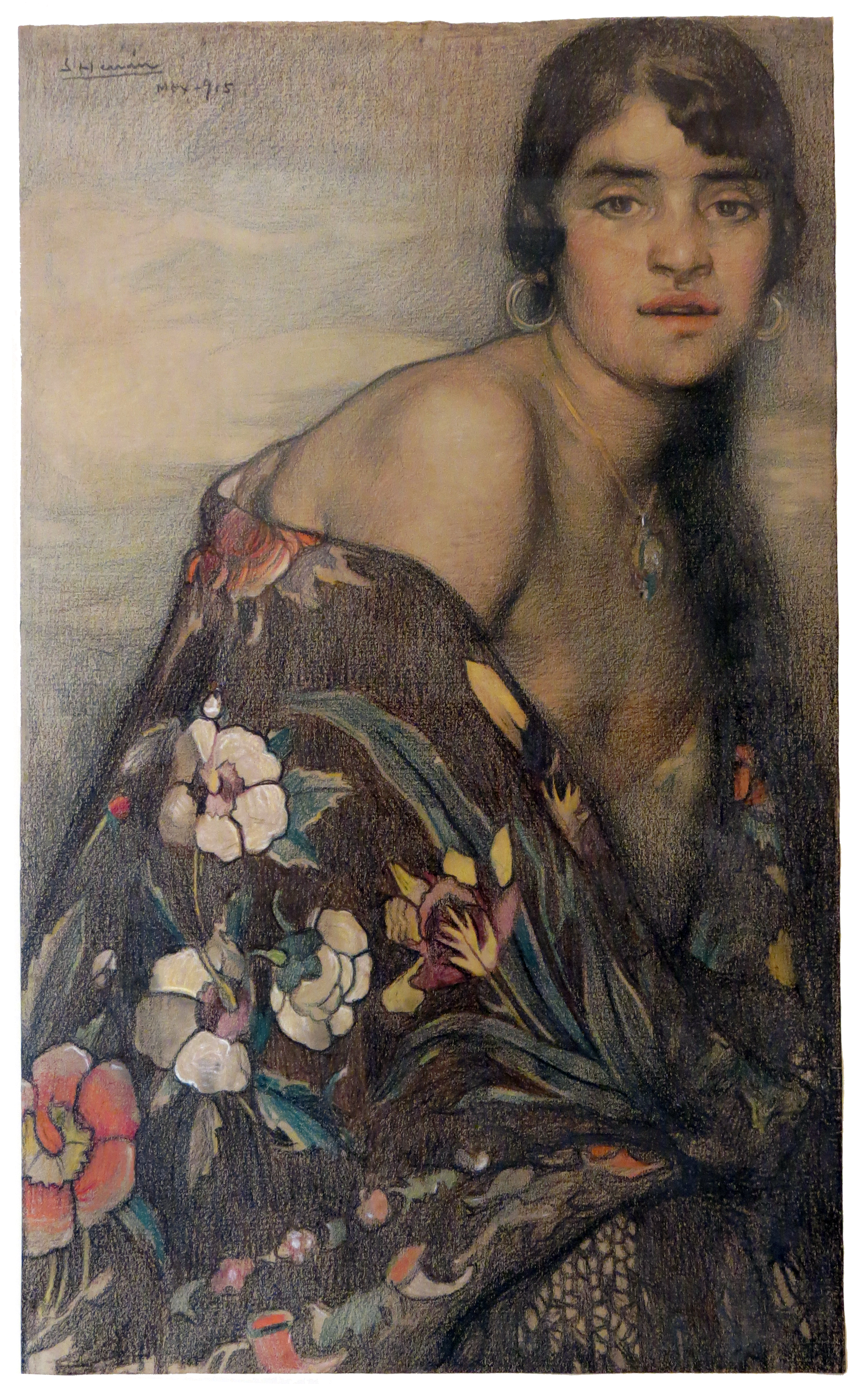We continue our monthly partnership with the Museo Blaisten with this amazing example of Mexican art. : ) Enjoy!
The Harvest is a very early canvas by Herrán, who hailed from the state of Aguascalientes. It is from the period when he was just finishing his studies at the National School of Fine Arts and still searching for his own, personal voice. The composition is openly decorative in its intention, a notion Germán Gedovius had been promoting among the San Carlos Academy students in his Color and Composition classes at the beginning of the 20th century. The narrative breaks with the given aesthetic of the period in that it confounds with the expectations of clarity and hierarchy that were basic to traditional academism: it brings ostensibly unrelated motifs together in a single composition. The woman does not carry a food basket, implying the idea of taking a rest to eat at the dinner house, or even the notion of work as an activity required for the sustenance of the family. In this sense, it may be convenient to compare The Harvest with Labor (1908), the first of Herrán’s important compositions that does sustain the implications just noted, and a composition that is quite naturally called to mind by this one, albeit with certain affinities in the facial features of the peasants, something that does not square with what will become one of the most important attributes of the mature Herrán.
The indubitable virtues of the paint (in terms of color, luminosity, and texture) reveal the strong influence of Belgian-born painter, Frank Brangwyn (1867–1956), whose work could have been studied at the time through the use of three-toned reproductions in the school’s library, as Herrán and Diego Rivera are known to have done.
P.S. Here are the five most beautiful depictions of harvest in art. <3


 Saturnino Herrán
Saturnino Herrán